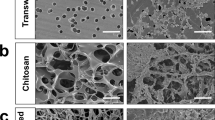Abstract.
Stroke is the major cause of adult brain dysfunction. In an experimental approach to evaluate the possible beneficial effects of administration of neurotrophic factors in stroke, we have used a model of distal middle cerebral artery (MCA) occlusion in adult rats. In this model, we found: (1) a permanent reduction of brain-derived neurotrophic factor (BDNF) and its full-length receptor, TrkB, in the infarcted core; (2) a transient increase in BDNF immunoreactivity in the internal region of the border of the infarct (penumbra area) at 12 h after MCA occlusion; (3) increased truncated TrkB immunoreactivity in astrocytes surrounding the area of the infarction; and (4) increased full-length TrkB immunoreactivity in scattered neurons, distant from the infarct, in ipsilateral and contralateral cortices at 24 and 48 h after MCA occlusion. We next studied the regulation of TrkB expression by BDNF, after ischemia, and its neuroprotective effects in vivo. In control non-ischemic rats, grafting of mock- or BDNF-transfected fibroblasts (F3A-MT or F3N-BDNF cell lines, respectively) in the medial part of the somatosensory cortex increased truncated TrkB immunoreactivity in neighboring astrocytes. Grafting alone also increased full-length TrkB in the vicinity of the mock graft (at 24 and 48 h) and the BDNF-grafted graft (at 4 days). Interestingly, ischemic animals grafted with the mock-transfected cell line did not show any further regulation of TrkB receptors. However, ischemic animals grafted with the BDNF cell line showed an up-regulation of full-length TrkB expression in neurons located in the internal border of the infarct. Analysis of nuclear DNA fragmentation in situ, combined with microtubule-associated protein 2 immunohistochemistry, revealed that most cells dying in the borders of the infarct (penumbra area) at 48 h following MCA occlusion were neurons. No differences in the infarct size were found between MCA occluded, mock-transfected MCA-occluded, and BDNF-transfected MCA-occluded rats. Moreover, cell death was similar in non-grafted and mock-grafted rats subjected to MCA occlusion. However, the number of cells with nuclear DNA breaks was significantly reduced in the penumbra area close to the BDNF graft in ischemic rats. Thus, our results show that BDNF specifically up-regulates its full-length TrkB receptor in cortical neurons of the penumbra area and prevents their death in an in vivo model of focal ischemia.
Similar content being viewed by others
Author information
Authors and Affiliations
Additional information
Electronic Publication
Rights and permissions
About this article
Cite this article
Ferrer, I., Krupinski, J., Goutan, E. et al. Brain-derived neurotrophic factor reduces cortical cell death by ischemia after middle cerebral artery occlusion in the rat. Acta Neuropathol 101, 229–238 (2001). https://doi.org/10.1007/s004010000268
Received:
Accepted:
Issue Date:
DOI: https://doi.org/10.1007/s004010000268




